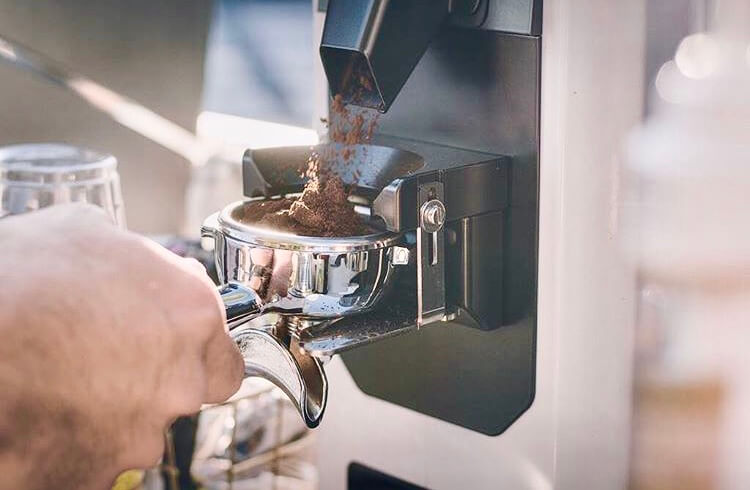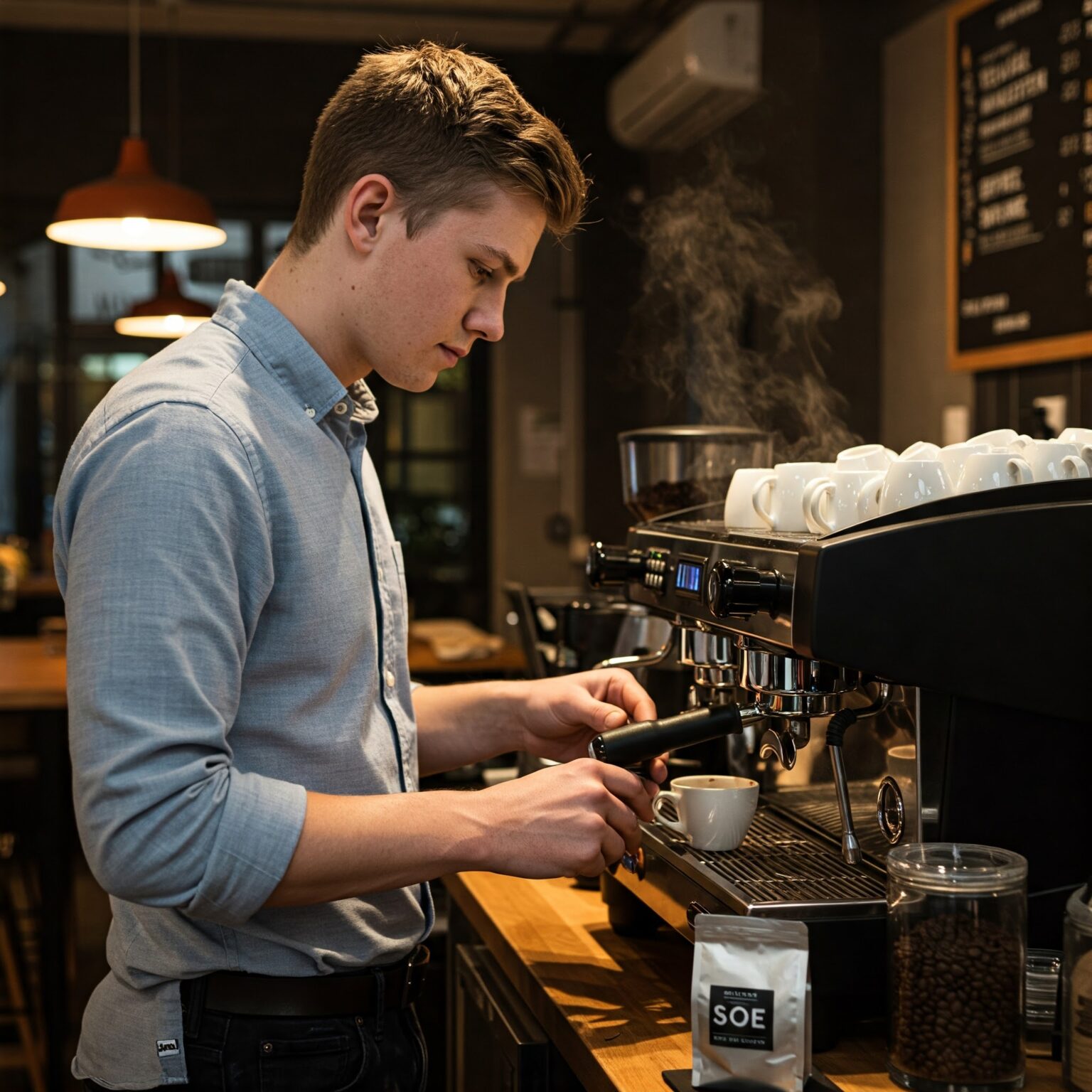Coffee Beans Uncovered: Finding the Keys of Espresso and Blended Coffee Beans
When you think regarding coffee, what comes to mind? Is it the abundant aroma of coffee or the intricacy of a well-crafted mix? Recognizing the subtleties of coffee beans can transform your experience.
The Origins of Coffee: A Historical Point Of View
Although coffee is now a staple in coffee culture worldwide, its origins map back to the very early 20th century in Italy. In 1901, Luigi Bezzera patented the first espresso machine, intending to make coffee faster than standard methods.
Understanding Espresso Beans: Qualities and selections
When you think of coffee, it's necessary to recognize the various bean ranges and their special tastes. Each kind brings an unique personality to your mug, influenced by variables like roast levels. Understanding these elements can raise your espresso experience substantially.
Espresso Bean Varieties
As you explore the world of espresso, you'll quickly find that not all beans are created equivalent; each variety brings its own unique flavors and characteristics to your cup. The most preferred kinds include Arabica and Robusta. Arabica beans are understood for their smooth, nuanced tastes and reduced high levels of caffeine material, making them a preferred among coffee connoisseurs. On the other hand, Robusta beans pack a more powerful strike with higher high levels of caffeine and a much more bitter preference, commonly preferred in blends for their crema-enhancing high qualities. You may additionally encounter specialized beans like Liberica and Excelsa, which use distinctive profiles and are much less usual. Each selection uses something various, so experimenting will certainly help you discover your perfect coffee.
Flavor Profiles Described
Understanding the flavor profiles of various coffee beans can raise your coffee experience. Each bean range supplies unique features that affect fragrance, preference, and mouthfeel. For example, Arabica beans commonly provide a sweeter, much more complicated taste with tips of fruit and floral notes, while Robusta beans have a tendency to be bolder, with natural and nutty touches.
When you check out single-origin beans, you might uncover distinctive regional flavors-- Central American beans might be intense and citrusy, whereas Italian blends often supply abundant, chocolatey notes.
Roast Degrees Effect
Roast levels play an essential role in shaping the flavor and scent of coffee beans, influencing your total coffee experience. Comprehending these roast levels helps you select the espresso that suits your preference preferences. Experimenting with various roasts can lead to delightful explorations, boosting your admiration for coffee.
The Art of Mixing: What Makes Blended Coffee Special
What makes blended coffee so fascinating? You can experiment with different combinations to boost body, acidity, and sweetness, resulting in a brew that's richer and extra complicated than a single-origin coffee.
Plus, mixing can aid keep uniformity, offering a reliable flavor experience no matter of seasonal variants in beans. Whether you're a barista or a home brewer, understanding the art of mixing opens up a world of creativity and flavor opportunities, making your coffee experience genuinely one-of-a-kind.
Taste Profiles: Sampling Notes of Espresso vs. Blended Coffee
Combined coffee uses a globe of flavor opportunities, yet when it pertains to espresso, you're looking at an extra concentrated experience. Espresso normally showcases bold, rich tastes with a thicker mouthfeel. You could see notes of dark delicious chocolate, sugar, or even tips of fruit, relying on the beans. The strength can be both stimulating and satisfying.
On the other hand, mixed coffee presents a complicated tapestry of flavors. You can discover a selection of sampling notes, from nutty and pleasant to floral and fruity. Each blend can supply something unique, often integrating beans from different areas to produce a well balanced account.
While coffee supplies a strike, combined coffee welcomes you to savor the nuances. Whether you choose the durable toughness of espresso or the complex tastes of combined coffee, each mug informs its own story, waiting for you to uncover.
Developing Techniques: Perfecting Your Espresso Shot
To attain the ideal espresso shot, understanding the brewing methods is essential, as even minor changes can greatly influence the flavor and quality. Begin by utilizing fresh, high-quality coffee beans; grind them just before developing for optimum flavor. Purpose for a fine work, about the uniformity of salt, to assure excellent removal.
Next, take note of your water temperature; it should be between 195 ° F to 205 ° F. Too hot or also chilly can ruin your shot. Usage about 18-20 grams of coffee for a double shot, and tamp it uniformly with firm stress to produce a consistent puck.
Ultimately, regulate your removal time; go for 25-30 secs. A longer removal can cause anger, while also brief can result in sour flavors. Practice these techniques consistently, and you'll fine-tune your skills, accomplishing that rich, full-bodied espresso shot you crave. Appreciate the journey!
The Function of Roast Levels in Espresso and Blended Coffee
After understanding the brewing techniques for coffee, it's time to consider how roast degrees affect the flavor profile of your coffee. The roast level can substantially change your coffee's preference, scent, and body. Light roasts often tend to highlight the coffee's beginning, using bright acidity and fruity notes, while tool roasts equilibrium level of acidity and sweet taste, developing an all-round taste. Dark roasts, on the various other hand, draw out vibrant, abundant flavors with reduced level of acidity, typically generating delicious chocolate or great smoky touches.

Discovering Sustainability: Moral Sourcing of Coffee Beans
When you choose coffee, you're not just choosing a taste; you're making a selection regarding the influence on farmers and the setting. Comprehending Fair Trade techniques, chemical-free farming techniques, and qualification criteria can aid you sustain lasting coffee sourcing. Allow's check out exactly how these aspects add to an extra moral coffee experience.
Fair Profession Practices
Fair Trade techniques play an essential duty in making sure that coffee beans are sourced ethically and sustainably. When you pick Fair Profession coffee, you sustain farmers who receive reasonable salaries and work in safe conditions. By deciding for Fair Trade brands, you're not simply enjoying a rich cup of coffee; you're making a positive influence on the lives of those who grow it.
Natural Farming Methods
As you explore the globe of honest coffee sourcing, natural farming techniques arise as a necessary part of sustainability. By selecting organic coffee, you support techniques that prioritize soil wellness, biodiversity, and natural environments. Farmers stay clear of artificial chemicals and plant foods, depending instead on all-natural compost and plant turning to boost soil fertility. This not just secures the atmosphere however additionally improves the Single Origin Espresso top quality of the coffee you enjoy. Organic farming motivates local wildlife and promotes a balanced ecological community, lowering the opportunities of condition and insects. In addition, it frequently results in more powerful, much healthier coffee plants, leading to richer tastes in your mug. You're making a conscious choice that benefits both the earth and your palate. when you opt for organic coffee.
Certification Requirements Explained
Recognizing certification criteria is essential for anyone curious about fairly sourced coffee. These criteria, such as Fair Profession, Rain Forest Alliance, and USDA Organic, guarantee that coffee is grown under sustainable techniques. You support farmers who stick to moral labor techniques and ecological security. when you choose certified coffee.
Fair Profession qualification focuses on offering reasonable salaries and functioning problems, while Rain forest Partnership emphasizes biodiversity and ecological community conservation. USDA Organic ensures that no artificial plant foods or chemicals are utilized. By acquainting yourself with these qualifications, you can make informed options that line up with your values. Next time you're at your regional café or food store, seek these labels, and really feel great knowing your coffee acquisition favorably influences neighborhoods and the environment.
Frequently Asked Inquiries


How Does Elevation Affect the Development of Coffee Beans?
Altitude impacts coffee bean growth by influencing temperature and climate. Higher elevations often generate denser beans with even more complicated flavors, while reduced altitudes can cause faster growth yet less tasty outcomes. You'll taste the difference!
What's the Distinction Between Arabica and Robusta Beans?
Arabica beans are sweeter and extra complicated, while Robusta beans have a more powerful, harsher taste with greater high levels of caffeine content. You'll locate Arabica liked for specialty coffees, whereas Robusta's often made use of in instantaneous coffee and coffee blends.
Can Coffee Beans Go Bad or Lose Flavor Gradually?
Yes, coffee beans can go negative and lose flavor over time. They'll end up being stale if you store them improperly or maintain them also long. Always keep your beans in an impermeable container far from light and dampness.
What Are the Health Advantages of Drinking Espresso?
Consuming coffee boosts your energy, improves mental clarity, and may lower the danger of particular conditions. It's abundant in antioxidants, supports metabolic rate, and can boost state of mind, making it an advantageous selection for your daily regimen.
Exactly How Does Water Top Quality Influence Espresso Removal?
Water quality significantly impacts espresso extraction. It influences the solubility of flavors and oils, influencing taste and aroma. Utilizing filtered water can improve your espresso, making certain a delightful and well balanced mug every time you brew.
Coffee Beans Uncovered: Discovering the Tricks of Coffee and Blended Coffee Beans.
Recognizing the flavor profiles of different espresso beans can elevate your coffee experience.Roast levels play a crucial duty in forming the flavor and scent of espresso beans, affecting your general coffee experience (SOE).Blended coffee uses a globe of taste opportunities, but when it comes to coffee, you're looking at a more focused experience.After mastering the brewing strategies for espresso, it's time to consider how roast levels influence the taste profile of your coffee